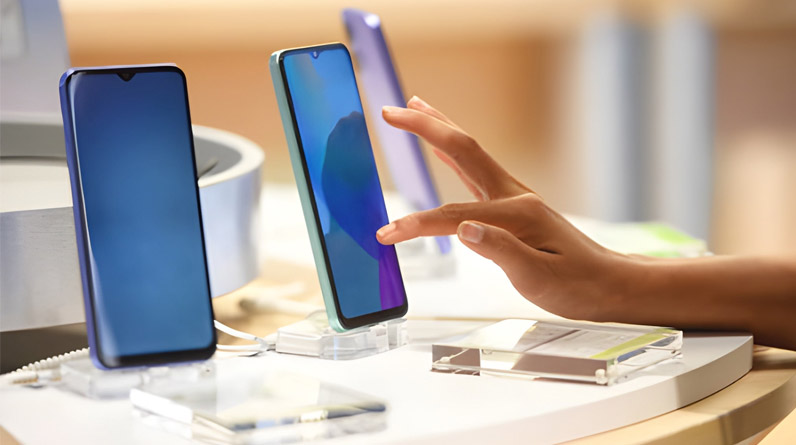The smartphone industry has reached an inflection point in 2025. For the first time in mobile history, the gap between budget and flagship devices has narrowed so dramatically that spending over $1,000 on a phone is becoming harder to justify. Today’s budget smartphones don’t just offer “good enough” performance—they deliver genuine flagship experiences at a fraction of the cost.
This comprehensive guide explores the best budget smartphones that bring premium features to accessible price points, helping you make an informed decision without compromising on the experiences that matter most.
The Democratization of Flagship Features: What Changed in 2025?
The budget smartphone segment has undergone a remarkable transformation. What was once considered “premium” technology is now standard in phones priced between $300 and $700. This shift is driven by several factors:
- Component Cost Reduction: Advanced processors like the Snapdragon 8 Gen 3 and displays with 120Hz refresh rates have become significantly more affordable to manufacture.
- Competitive Pressure: Brands like OnePlus, POCO, and realme are aggressively challenging traditional premium manufacturers.
- Consumer Expectations: Users now demand flagship-quality cameras, displays, and performance regardless of price point.
- Technology Maturation: Features like fast charging, computational photography, and AI processing are no longer exclusive to premium devices.
According to market research, nearly 68% of smartphone buyers in 2025 prioritize specific flagship features over brand prestige, making the budget flagship category the fastest-growing segment globally.
Understanding Budget Flagship Smartphones: What Makes Them Special?
Budget flagship phones occupy a unique space in the market. They’re not simply “cheaper versions” of premium phones—they represent a strategic approach to smartphone design where manufacturers identify the features users truly value and deliver those without compromise.
The Strategic Compromise Framework
Every budget flagship makes calculated trade-offs. Understanding these compromises helps you choose the right device:
- Materials Over Performance: Plastic backs instead of glass, but flagship processors inside
- Camera Quality Over Quantity: Fewer sensors, but professional-grade primary cameras
- Display Features Over Build: Premium AMOLED screens in less premium chassis
- Software Support Over Hardware Extras: Long-term updates instead of wireless charging
Top Flagship Features Now Standard in Budget Phones
Premium Processors: Desktop-Class Performance
The most significant development in 2025 is the availability of flagship-grade processors in budget devices. Phones now offer:
- Qualcomm Snapdragon 8 Elite: The most powerful mobile processor of 2025, available in devices under $700
- Snapdragon 8 Gen 3: Last year’s flagship chip, delivering 95% of current flagship performance
- MediaTek Dimensity 9400e: Competitive performance with superior power efficiency
These processors enable features that were impossible in budget phones just two years ago: 8K video recording, advanced AI photography, desktop-mode productivity, and AAA gaming at high settings.
Professional-Grade Cameras: No More “Filler” Sensors
Gone are the days of useless 2MP macro and depth sensors. Budget flagships in 2025 feature genuinely useful camera systems:
- 50MP+ Primary Sensors: Often the same sensors used in flagship phones
- Telephoto Lenses: Now standard with 2x-3x optical zoom capability
- Computational Photography: Google’s Tensor G4 processing in the Pixel 9a rivals any flagship
- Video Capabilities: 4K at 60fps is baseline, with some offering 8K recording
Ultra-Fast Charging: Zero Range Anxiety
Battery technology has made quantum leaps. Budget flagships now offer charging speeds that shame even premium Western flagships:
- 120W Charging: 0-100% in under 20 minutes (POCO F7 Ultra, realme GT 7)
- 90W Charging: Full charge in 30-35 minutes (Vivo V50, Redmi Note 14 Pro+)
- 50W Wireless Charging: Previously flagship-only, now in mid-tier devices
- 6,000-7,000mAh Batteries: Two-day battery life is becoming standard
Best Budget Smartphones by Flagship Feature Category
Best for Flagship Cameras: Google Pixel 9a
Price Range: $499-$549
Standout Feature: Computational photography powered by Tensor G4
The Pixel 9a represents the gold standard for budget smartphone photography. It uses the same Tensor G4 processor and camera algorithms as the flagship Pixel 9, meaning you get identical photo quality at nearly half the price. Google’s AI-powered features like Magic Eraser, Best Take, and Audio Magic Eraser are all included.
What You Get:
- World-class point-and-shoot photography
- Guaranteed seven years of Android updates
- Gemini AI integration for advanced features
- Night Sight that rivals any flagship
The Compromise: Plastic build, 60Hz display option, slower 18W charging
Best for All-Around Performance: Samsung Galaxy S24 FE
Price Range: $649-$699
Standout Feature: Complete flagship ecosystem experience
Samsung’s Fan Edition strategy delivers impressive value. The S24 FE includes features typically reserved for the Ultra models: a telephoto camera with 3x optical zoom, Dynamic AMOLED 2X display technology, and Samsung’s complete suite of Galaxy AI features.
What You Get:
- Seven years of software updates (matching flagship commitment)
- Exynos 2400e processor (flagship-class performance)
- Complete Galaxy ecosystem integration
- Premium build quality with IP68 water resistance
The Compromise: Slightly older processor architecture, thicker bezels than S25 series
Best for Raw Speed: OnePlus 13R
Price Range: $599-$649
Standout Feature: SUPERVOOC 100W fast charging and 120Hz LTPO display
OnePlus has perfected the art of delivering flagship speed at mid-range prices. The 13R features a Snapdragon 8 Gen 3 processor paired with blazing-fast LPDDR5X RAM and UFS 4.0 storage, creating a phone that feels as responsive as devices costing twice as much.
What You Get:
- 0-100% charging in under 25 minutes
- 6,000mAh battery for all-day power
- OxygenOS with minimal bloatware
- Proper telephoto camera (no filler lenses)
The Compromise: Secondary cameras lag behind primary, possible lack of IP rating in some regions
Best for Ultimate Value: HONOR 400 Pro
Price Range: $590-$630
Standout Feature: Lowest price for Snapdragon 8 Gen 3 with 50W wireless charging
The HONOR 400 Pro is the dark horse of budget flagships. It’s the most affordable device offering both a true flagship processor and wireless charging capabilities that many premium phones lack.
What You Get:
- Six years of Android updates
- 50MP versatile telephoto camera
- 50W wireless charging (rare at this price)
- Competitive pricing below other Snapdragon 8 Gen 3 devices
The Compromise: Less premium materials, regional availability varies
Best for Power Users: POCO F7 Ultra
Price Range: $660-$700
Standout Feature: Most affordable Snapdragon 8 Elite device
For users who demand the absolute best performance, the POCO F7 Ultra delivers 2025’s most powerful processor at an unprecedented price point. This is the phone that makes flagship performance genuinely accessible.
What You Get:
- Snapdragon 8 Elite processor (equal to $1,200+ flagships)
- 120W HyperCharge technology
- UFS 4.1 storage (fastest available)
- No filler cameras—all useful sensors
The Compromise: Less refined software experience, gaming-focused design may not appeal to all
Best for Battery Life: realme GT 7

Price Range: $680-$720
Standout Feature: 7,000mAh battery with 120W charging
The realme GT 7 solves the eternal smartphone problem: running out of power. Its massive 7,000mAh battery combined with ultra-fast charging creates the perfect combination for heavy users.
What You Get:
- Two full days of heavy use on single charge
- MediaTek Dimensity 9400e (flagship-class efficiency)
- 8K video recording capability
- 4K video at 120fps for content creators
The Compromise: Slightly heavier device due to large battery, regional availability
Budget Flagship Comparison Table
| Model | Price | Processor | Battery | Charging | Key Strength |
|---|---|---|---|---|---|
| Google Pixel 9a | $499-$549 | Tensor G4 | 4,500mAh | 18W | Best Camera |
| Samsung S24 FE | $649-$699 | Exynos 2400e | 5,000mAh | 25W | Ecosystem |
| OnePlus 13R | $599-$649 | Snapdragon 8 Gen 3 | 6,000mAh | 100W | Speed & Charging |
| HONOR 400 Pro | $590-$630 | Snapdragon 8 Gen 3 | 5,500mAh | 50W Wireless | Best Value |
| POCO F7 Ultra | $660-$700 | Snapdragon 8 Elite | 5,300mAh | 120W | Raw Performance |
| realme GT 7 | $680-$720 | Dimensity 9400e | 7,000mAh | 120W | Battery Life |
How to Choose the Right Budget Flagship for Your Needs
For Photography Enthusiasts
Choose the Google Pixel 9a. No other phone in this category matches its computational photography capabilities. The seven-year update guarantee ensures your investment remains current.
For Samsung Ecosystem Users
The Samsung Galaxy S24 FE is your best bet. If you already own Galaxy Buds, a Galaxy Watch, or use Samsung’s SmartThings ecosystem, the seamless integration justifies the slightly higher price.
For Power Users and Gamers
Go with the POCO F7 Ultra. The Snapdragon 8 Elite processor ensures this phone will handle demanding tasks and games for years to come.
For Heavy Daily Users
Select the realme GT 7. The combination of a 7,000mAh battery and 120W charging means you’ll genuinely never worry about battery life again.
For Budget-Conscious Buyers
The HONOR 400 Pro delivers flagship features at the lowest entry price, making it ideal for users who want premium performance without stretching their budget.
For Speed Enthusiasts
Pick the OnePlus 13R. The combination of fast charging, smooth display, and responsive software creates the most fluid daily experience.
The Future of Budget Flagships: What’s Next?
The budget flagship category will only become more competitive. Industry trends suggest several developments for late 2025 and 2026:
- AI Integration: Advanced on-device AI features will become standard, with capabilities currently exclusive to premium phones
- Display Technology: 144Hz displays and LTPO panels (for adaptive refresh rates) will trickle down
- Foldable Options: Budget foldable devices are expected to debut under $800
- Sustainability: More manufacturers will adopt recycled materials and modular designs
- Software Longevity: Seven-year update commitments will become industry standard
Key Takeaways: Making Your Decision
When choosing a budget flagship smartphone in 2025, remember these essential points:
- Identify Your Priority: Every phone excels in one area—match that to your primary use case
- Consider Longevity: Software update commitments matter as much as hardware specs
- Evaluate Real-World Use: Benchmark scores matter less than how the phone performs in daily tasks
- Check Regional Availability: Some excellent devices have limited availability depending on your location
- Factor in Ecosystem: If you’re invested in Apple, Samsung, or Google services, ecosystem integration adds value
Conclusion: The Golden Age of Affordable Flagships
We’re living in the golden age of budget flagship smartphones. The devices covered in this guide deliver experiences that were unimaginable at these price points just three years ago. Whether you prioritize camera quality, raw performance, battery life, or overall value, there’s never been a better time to buy a budget flagship phone.
The democratization of premium technology means you no longer need to compromise on the features that matter most. By understanding what each device excels at and making informed trade-offs, you can secure a smartphone that rivals or exceeds the capabilities of devices costing twice as much.
Choose based on your specific needs rather than brand prestige, and you’ll discover that “budget” no longer means “settling for less”—it means being smart about where your money delivers the most value.


